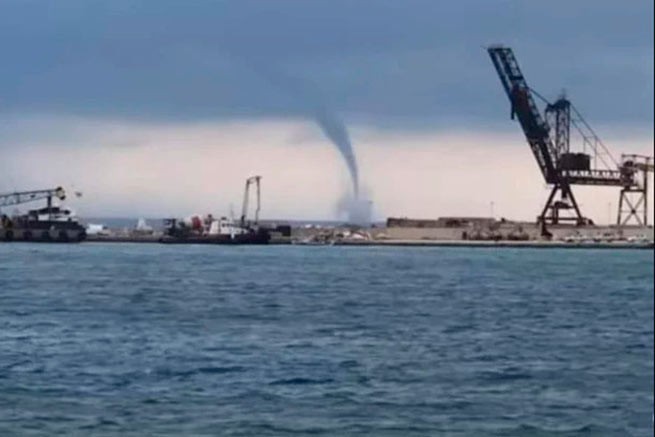Cyclone Daniel, which hit Greece since yesterday, has led to the formation of such rare and dangerous weather phenomena as a waterspout.
The National Observatory of Athens publishes a photograph of a waterspout that appeared on Monday, September 4, near Mantoudi on the island of Evia.
Υδροσίφωνας εμφανίστηκε κοντά στο Μαντούδι Ευβοίας τη Δευτέρα 4 Σεπτεμβρίου 2023.
Φωτογραφία από EviaOnline. pic.twitter.com/Y7mxuwz2R4— meteo.gr – Ο καιρός (@meteogr) September 5, 2023
What is a waterspout
A water tornado is understood as a whirlwind of air that comes into contact with the surface of the sea, which “hangs” under thunderclouds, causing damage to property, and sometimes threatening the lives of people in its path. Such a whirlwind that occurs on the ground is called a tornado.
Water tornadoes are weaker than terrestrial ones, and the speed of their movement from one point to another is much less. Their diameter ranges from 3 to 50 m and very rarely can reach 100-150 m, and their lifetime is almost always a few minutes.
It should be noted that very powerful sea tornadoes are capable of destroying ships, and there is always a danger of them hitting the shore, which can lead to serious damage and even casualties.
Waterspouts in Greece
Areas with a high frequency of occurrence of sea tornadoes in Greece are the northern part of the Ionian Sea, the region of Rhodes and Halkidiki, although they have appeared several times in many other areas of the Aegean Sea. Waterspouts often occur in duplicates or triplets at the same time and are a meteorological phenomenon with a tendency to increase in frequency in our country.
However, the deadliest waterspout in Greece occurred on December 7, 1959, causing the destruction of a boat on Lake Plastira, killing 21 people. According to the meteorologist and the first Greek scientist who carefully studied this phenomenon in our country, Michalis Siutas, today more than 100 waterspouts are recorded annually in the marine territory of Greece.







More Stories
Weather forecast: rain and storms in Athens and Thessaloniki on Saturday
Thodoris Kolidas explains the phenomenon "black sky" on Good Friday
Black swan in the Evros river delta